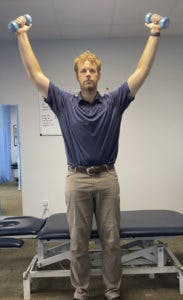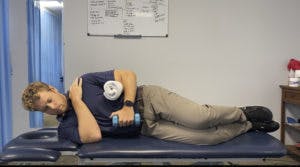“Why Does My Shoulder Hurt When I Raise My Arm?” We get this question all the time in the clinic. The pain is often intense and occurs when reaching overhead. It may even decrease or go away at a certain point in your range of motion. This type of shoulder pain can be frustrating because it can last a long time and become very intense if not addressed. Oftentimes, we don’t see patients until 3-6 months after their pain has started! The term physical therapists like to use to classify this type of shoulder pain is called Shoulder Impingement Syndrome.
What is Shoulder impingement syndrome?
The shoulder is… complicated. There are many structures in a very small area that have the potential to be the pain generators in the shoulder. This small area is called the sub acromial space. It is the area just underneath the bony part of your shoulder. Some of the structures in this space are the rotator cuff, biceps tendon, and shoulder ligaments . One or more of these structures can become irritated when compressed between the bones of your shoulder when reaching overhead. Shoulder impingement can occur in just about anyone. We see it is weight lifters, athletes, and those who have physical jobs. It can also occur in those who are sedentary or desk-bound for their job. Unfortunately, there is no magical rehab protocol for sub acromial impingement as it is a broad term when diagnosing shoulder pain. We are more concerned with why a structure is compromised. This article will look into the potential reasons why you have this type of shoulder pain. Once you have the why, then it becomes much easier to solve this issue.
What are the causes of shoulder impingement?
1.Mobility Restriction /Tightness Around your Shoulder
Tightness around the shoulder can have an impact optimal movement. Poor movement, overtime, can lead to pain and discomfort. The shoulder joint is a ball and socket joint. It is similar to a golf ball sitting on a golf tee. The ball needs to be centered on the tee in order for the shoulder to function properly. Tightness in the chest muscles can cause the ball to sit too far forward on the tee. This will cause space around your shoulder to become limited with reaching overhead. We see this type of tightness in those that sit most of the day. Sitting for extended periods will cause the shoulder girdle to pull forward leading to tightness in the chest muscles.
Your thoracic spine or upper back may also be contributing to impingement. If you do not have enough upper back extension, your ability to reach overhead may be compromised and over time lead to compression in the space around your shoulder. A good way to illustrate how your thoracic spine affects your shoulder motion is to sit forward in a slumped position and try to raise your arms overhead as far as you can. Now try it again while sitting in an upright position. You should notice a significant increase in the amount of shoulder range of motion when sitting more upright. This is because when your thoracic spine is extended, it allows for more optimal movement of your shoulder blades.
Here are some drills you can try to improve your mobility:
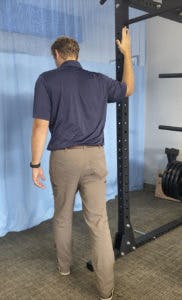

2. Scapular Dysfunction/ Poor Shoulder Blade Movement
The shoulder requires 180 degrees of elevation of full function. Some of that movement comes from your scapula rotating on your ribcage. If the scapula is not rotating fully or properly, you will have decreased sub acromial space leaving you susceptible to impingement and pain. The muscles that work together to rotate the scapula are the lower trapezius and the serratus anterior. These muscles are frequently weak or misused in patients with shoulder pain. If we can get these muscles functioning properly, It can go a long way to fixing your shoulder pain.
Exercises to train these muscles:
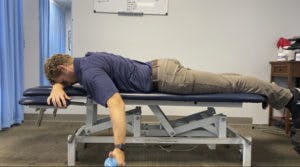
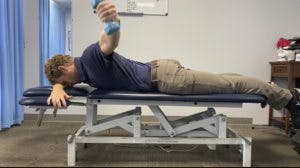

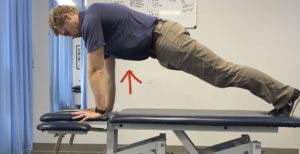
3. Repetitive Movement/ Overuse
Sometimes the forces placed on the rotator cuff muscles go above what we can handle. We see this type of issue a lot in overhead athletes and those who have physical jobs. Without strong enough rotator cuff muscles, the repetitive nature of their movement essentially wears the tendons out and causes inflammation and if chronic, breakdown of the rotator cuff tendons. Resting won’t necessarily fix this issue, especially if you go right back to sport or repetitive work. Our bodies need to be resilient enough to handle the workload we put on them. In this type of shoulder impingement, a rotator cuff strengthening program will help build the correct muscles to be able to handle the loads placed on the shoulder.
Exercises to train the rotator cuff:

